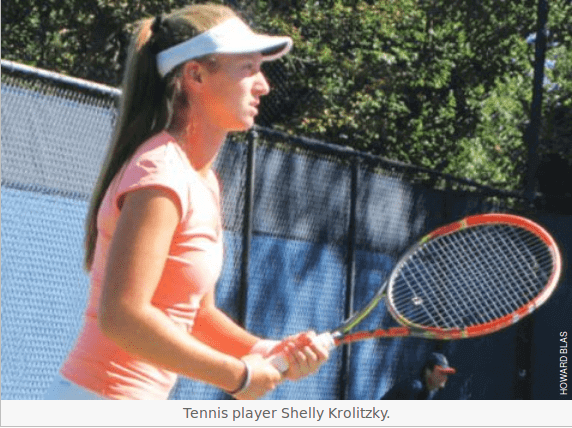Original Article Published at The Jerusalem Post
By the time Yshai Oliel clawed his way back to 2-2 in the third set of the first-round match in the Junior Boys’ singles tournament at the US Open versus Juan Carlos Manuel Aguilar of Bolivia, court 14 felt and sounded like countryman Dudi Sela’s first-round US Open thriller.
Oliel lost the first set 6-4 in 41 minutes and battled back to quickly take the second set in 19 minutes. Chants of “Yallah, Yshai,” “Kadima” and “let’s go, Yshai” from the packed stands turned to “mazal tovs” and requests for autographs when Oliel, down 2-0 in the third, closed out Aguilar 6-2 in the 29 minute third and final set.
Oliel certainly noticed the fans cheering for him. “I am proud of all the Israeli people and Jews who come to see us and cheer today.”
Oliel spoke with The Jerusalem Post in the US Open media center minutes after his match. “I feel very good and happy. I am excited.” Oliel reflected on the match and on his very successful year which includes winning the junior doubles title at the French Open. “I fought during the long match today. I still need to improve. To play more aggressive.”
Oliel feels he need to work on his volleys and to be more aggressive to achieve his goal of rising in the rankings.
Coach Jan Pochter, who has worked with Oliel since age 4, is similarly proud, though he acknowledges that Oliel got off to a slow start.
“He started nervous and tight and wasn’t his best. The other guy was aggressive and went for shots. Mentally, he was very tight. Then Yshai began to play much more aggressive and his opponent couldn’t match his rhythm.
He asked for a medical time out (perhaps a tactic to stop Yshai, who was in the zone), then Yshai came back. He lost two games, but still felt it was his match. I told him to concentrate and do your best and he did it.”
Pochter feels Oliel has tremendous potential. “He is one of the best players in the tournament, though mentally he has ups and towns. If he plays smooth, he will win.”
Oliel next faces No. 2 seed Alex De Minaur of Australia.
“If he plays his best, he has a good chance to win,” said Pochter.
Pochter is accompanying and coaching Israeli juniors Oliel and Shelly Krolitzky at the US Open. Both are members of the David Squad, an elite training organization which seeks to develop and train Israeli tennis players to be successful at the highest levels of international competition.
“I am proud to be a part of David Squad, I am proud of the team, and I appreciate David Coffer, who sponsors us,” said Oliel. “I hope I will be able to give him back all that he expects.”
“Without the David Squad, we would not get to the tournaments and get to the next level,” notes Pochter.
“This is a present for Israeli tennis that we have special people like David and Adam Coffer [David’s son]. It is like winning the lottery for these kids.”
Adam Coffer is proud of Oliel and the David Squad team.
“Yshai is an exceptional talent with a fantastic attitude. We are always so proud of him and the team. This is the natural progression reflecting the years of hard work he and all our team have put in. His and Shelly’s progress also sets the right example for the extremely talented younger kids we have coming through the DS family. But it is not our or their end goal – there are many more, higher, targets ahead for him.”



